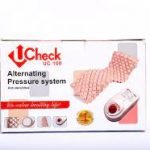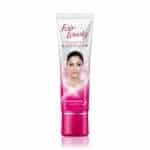delivery within 72 Hours
Zyocaine Gel
₨ 39
Product Title: Zyocaine Gel 15Gm
Generic: lidocaine hydrochloride
Pack Size: 1
Product Form: Gel
Delivery within: 2 to 3 working days across Pakistan
Shipping & Delivery
-
Courier delivery
Our courier will deliver to the specified address
2-3 Days
From Rs 250
-
Free 15-Day returns

Black Friday Blowout!
Description
Zyocaine Gel is a topical medication containing lidocaine hydrochloride as its active ingredient. It is commonly used as a local anesthetic to numb the skin or mucous membranes, providing temporary relief from pain and discomfort associated with minor skin irritations, sunburn, insect bites, and minor cuts or scrapes.
Description:
Zyocaine Gel is a clear, viscous gel formulation containing lidocaine hydrochloride, a local anesthetic agent. Lidocaine works by blocking nerve signals in the body, temporarily numbing the area where it is applied and reducing the sensation of pain.
Uses:
Zyocaine Gel is typically used for the following purposes:
- Pain Relief: It is applied topically to provide temporary relief from pain and discomfort associated with minor skin irritations, sunburn, insect bites, minor cuts, scrapes, or burns.
- Local Anesthesia: Zyocaine Gel is used as a local anesthetic to numb the skin or mucous membranes before certain medical procedures, such as injections, minor surgical procedures, or the insertion of medical devices.
Dosage and Administration:
Zyocaine Gel should be applied sparingly to the affected area, using clean hands or a sterile applicator, and gently rubbed into the skin until absorbed. The recommended dosage and frequency of application may vary depending on the severity of pain and the specific medical condition. Follow the instructions provided by your healthcare provider or as directed on the product label.
Precautions:
Before using Zyocaine Gel, consider the following precautions:
- Allergy: Inform your healthcare provider if you are allergic to lidocaine or any other local anesthetics. Seek medical attention immediately if you experience signs of an allergic reaction, such as rash, itching, swelling, or difficulty breathing.
- Medical Conditions: Inform your healthcare provider about any existing medical conditions, especially heart disease, liver or kidney problems, or neurological disorders, as these may affect the use of Zyocaine Gel.
- Pregnancy and Breastfeeding: Consult your healthcare provider before using Zyocaine Gel if you are pregnant, planning to become pregnant, or breastfeeding, as the safety of lidocaine during pregnancy and lactation is not well established.
Side Effects:
Common side effects of Zyocaine Gel may include:
- Skin Irritation: Mild redness, itching, or burning sensation at the application site may occur, especially with prolonged use or excessive application.
- Allergic Reactions: Rarely, some individuals may experience allergic reactions to lidocaine, such as hives, swelling, or difficulty breathing. Seek medical attention if you experience any signs of an allergic reaction.
Storage:
Store Zyocaine Gel at room temperature, away from moisture, heat, and direct sunlight. Keep the tube tightly closed when not in use and out of reach of children.
FAQ:
- How quickly does Zyocaine Gel work?
- Zyocaine Gel typically starts to work within a few minutes after application, providing temporary numbness and pain relief to the affected area. The duration of action may vary depending on the concentration of lidocaine and the individual’s response.
- Can Zyocaine Gel be used on broken skin?
- Zyocaine Gel is intended for use on intact skin and should not be applied to open wounds or broken skin unless specifically directed by a healthcare provider. Using lidocaine on broken skin may increase the risk of systemic absorption and adverse effects.
- Is Zyocaine Gel safe for children?
- Zyocaine Gel may be used in children under the guidance of a healthcare provider, especially for minor skin conditions or before medical procedures. However, the dosage and application should be carefully supervised to ensure safety and effectiveness.
Customer Reviews
You must be logged in to post a review.







Reviews
Clear filtersThere are no reviews yet.